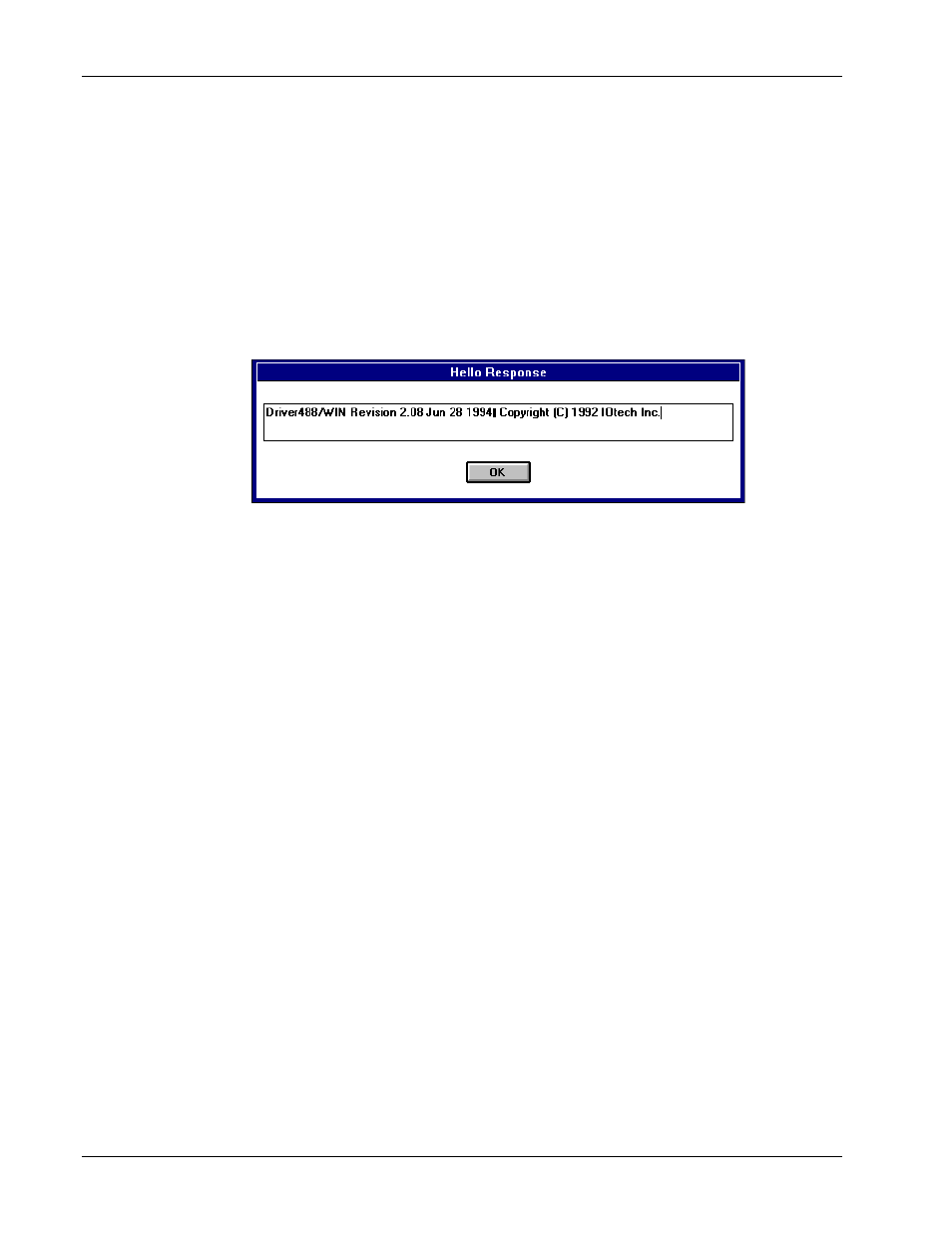Establishing communications – Measurement Computing Personal488 rev.3.0 For DOS & Windows 3.Xi User Manual
Page 225

10E. C Languages
II. SOFTWARE GUIDES - 10. Driver488/W31
II-210
Personal488 User’s Manual, Rev. 3.0
The program only has one menu with two selections: Go and Quit. When Go is selected, the service
routine for Go opens Driver488/W31. Then the
Hello
function is called, using the handle returned
from the
OpenName
function:
case WM_INITDIALOG:
cwCenter(hWndDlg, 0);
/* initialize working variables */
ieee=OpenName(“IEEE”);
Hello(ieee, hellomsg);
SetDlgItemText(hWndDlg, 101, (LPSTR)hellomsg);
Close(ieee);
break; /* End of WM_INITDIALOG */
After the Hello Message window is displayed, as shown in the figure, the driver handle is closed. Since
in this application the handle is created every time Go is selected, a potential conflict could arise if that
handle is not closed as we exit this subroutine. Clicking the OK button will close this window.
When the application is closed by selecting Quit, the
WM_DESTROY
message is sent to Driver488/W31:
case WM_CLOSE:
/* close the window */
hDriver=FindWindow((LPSTR)"Driver488Loader",
(LPSTR)"Driver488/W31");
SendMessage(hDriver, WM_DESTROY, 0, 0L);
DestroyWindow(hWnd);
if (hWnd == hWndMain)
PostQuitMessage(0);
/* Quit the application */
break;
Establishing Communications
The following program contains most of the function calls of Driver488/W31. The user interface of
this program is intentionally simple to highlight the Driver488/W31 operations. To centralize all of the
Driver488/W31-related code, the architecture of this example is not typical of a C program. This
example operates the multi-channel 16-bit analog-to-digital converter; the ADC488.
In every C program using Driver488/W31, header files of declarations must be merged into the
program. In the next example, those declarations are omitted from the listing for the sake of brevity.
With the associated source files, the following program can be built using the file
EXAMPLE2.MAK
(for
Miscrosoft C or Quick C users) or
EXAMPLE2.PRJ
(for Borland C users) found on the Driver488/W31
disk.
This example has several declarations that will be used later:
HWND hDriver
/* handle for Driver488/W31 */
DevHandleT ieee, adc, devhandle;
/* handles for the IEEE board * /
char textstr[2048], response[64];
/* string for Driver488responses */
double sum, voltage;
/* variables for ADC488 responses */
For the sake of this discussion, assume that Driver488/W31 has been configured to start with a
configuration including the devices
IEEE
(IEEE 488 interface) and
ADC
(ADC488/8S connected to the
IEEE 488 interface). Additional interfaces and/or devices may also have been defined, as the driver
can support up to 4 interfaces and 56 devices simultaneously. To open the two devices of interest, we
use the following statements:
Hello Message Window
